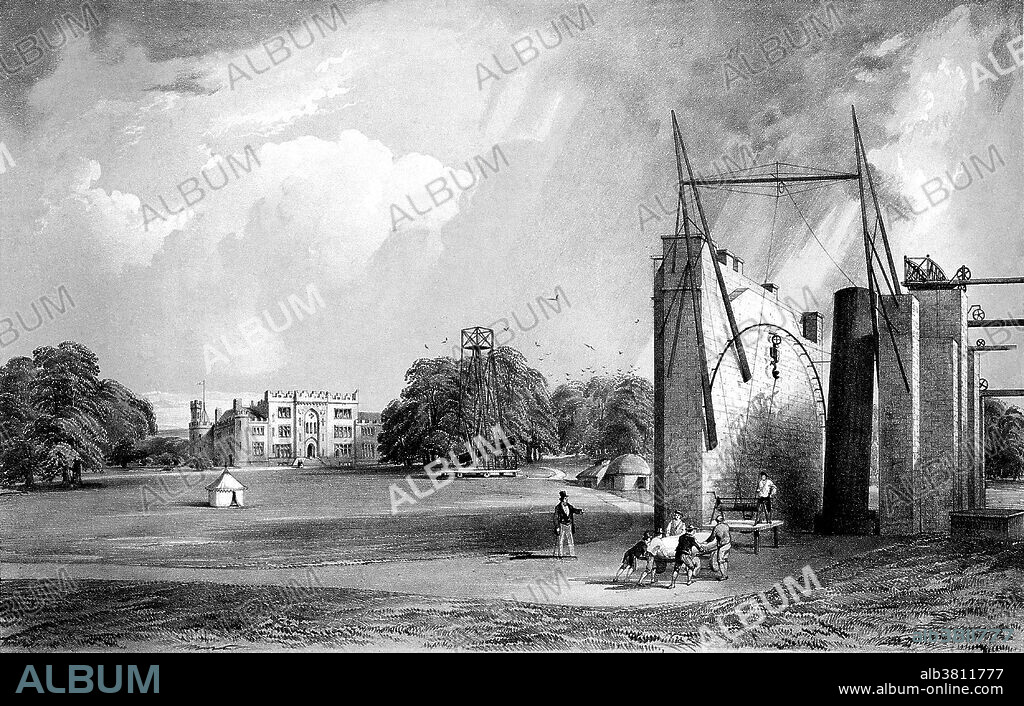alb3811777
William Parsons, Telescopes, 1840s

|
Añadir a otro lightbox |
|
Añadir a otro lightbox |



¿Ya tienes cuenta? Iniciar sesión
¿No tienes cuenta? Regístrate
Compra esta imagen
Título:
William Parsons, Telescopes, 1840s
Descripción:
Ver traducción automática
Parson's six foot telescope, three foot telescope, and castle. William Parsons, 3rd Earl of Rosse (June 17, 1800 - October 31, 1867) was an Anglo-Irish astronomer. He inherited an earldom and a large estate in King's County, Ireland when his father Lawrence Parsons, 2nd Earl of Rosse died in 1841. There he performed astronomical studies and discovered the spiral nature of some nebulas, today known to be spiral galaxies. His 72-inch telescope, Leviathan, built 1845, was the world's largest telescope until the early 20th century. His telescope was the first to reveal the spiral structure of M51, the Whirlpool Galaxy, and his drawings of it closely resemble modern photographs. He named the Crab Nebula, based on an earlier drawing made with his older 36-inch telescope in which it resembled a crab. A few years later, when the 72-inch telescope was in service, he produced an improved drawing of considerably different appearance, but the original name continued to be used. He served as a Member of Parliament for King's County from 1821-34, president of the Royal Society (1848-54), and chancellor of Trinity College, Dublin (1862-67). He died in 1867 at the age of 67.
Crédito:
Album / Science Source / Wellcome Images
Autorizaciones:
Modelo: No - Propiedad: No
¿Preguntas relacionadas con los derechos?
¿Preguntas relacionadas con los derechos?
Tamaño imagen:
4500 x 2869 px | 36.9 MB
Tamaño impresión:
38.1 x 24.3 cm | 15.0 x 9.6 in (300 dpi)
Palabras clave:
ARTE • ASTRONOMIA • ASTRONÓMICO • ASTRONOMO • BLANCO Y NEGRO • CIENCIA • DIBUJO • EUROPEO • FAMOSO • FIGURA • GENTE • HISTORIA • HISTORICO • HOMBRE • HOMBRES • ILUSTRACION • IMPORTANTE • IRLANDA • IRLANDES • LITOGRAFIA • MASCULINO • OBRA DE ARTE • OBSERVATORIO • PERSONA • PERSONALIDAD • PERSONALIDADES • PLANETARIO • PLANETARIOS • RETRATO DE HOMBRE • SIGLO XIX • TECNOLOGÍA • TECNOLÓGICA
 Pinterest
Pinterest Twitter
Twitter Facebook
Facebook Copiar enlace
Copiar enlace Email
Email
